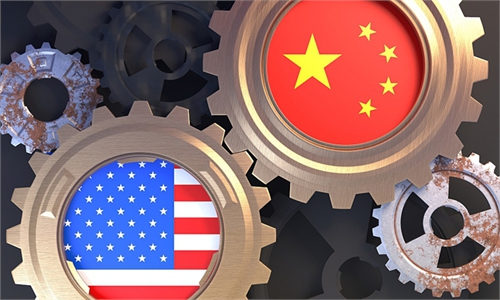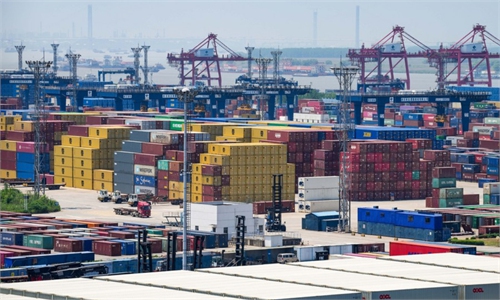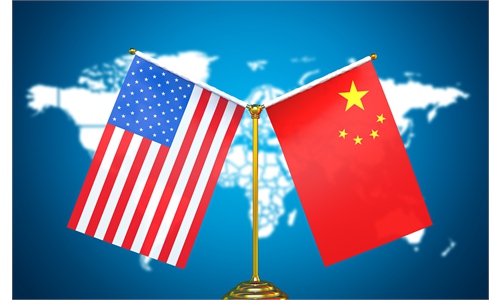
Photo: VCG
The problems with the exports of some products made in China to the US are the result of US policy toward China, which by no means represents the weakening of Chinese manufacturing in the global supply chain. Thus, it is another attempt of smearing the Chinese economy by US media outlets to describe the impact on exports of some Chinese products to the US as global supply chain problems caused by China's anti-COVID-19 measures.US manufacturing orders in China are down 40 percent, according to the latest CNBC Supply Chain Heat Map data. In the CNBC report on Sunday, the figure seems to be only an indicator used to judge trends linked to the global shipping industry.
Yet, Fox News was quick to cite the 40 percent fall in manufacturing orders as a proof to criticize China's supply chain problems caused by its anti-COVID-19 measures.
It is undeniable that the reported decrease of 40 percent in orders may give the impression that China-US trade is in a serious freefall, but it is highly questionable to what extent the CNBC data, which didn't mention a specific time period, industry breakdown or other specific data-gathering sources, can reflect the actual state of China-US trade.
Therefore, it is far-fetched and disgraceful for some Western media outlets with ulterior motives to play up China-US trade setbacks and place the responsibility on Beijing. If anything, it is extremely unprofessional for Western media outlets to hype up China's supply chain problems specifically based on an unknown and shockingly bad figure, given the fact that there is no short of more authoritative data about Chinese exports to the US.
Just a few days ago, Bloomberg claimed that "the US will have imported more goods from China in 2022 than in any year prior," citing the fact that the US imported $418 billion in goods from China in the first nine months of this year, or $23.7 billion more than it did in the same period of 2018, the current record holder. Also, data from the Chinese customs showed that in the first 10 months, China's exports to the US rose 6.6 percent on a year-on-year basis.
Of course, there is no denying that China-US trade is currently facing difficulties, which is due in a large part to the geopolitical pressure caused by Washington's suppression on the Chinese economy, instead of China's supply chains.
China's manufacturing value added has increased from 22.5 percent in 2012 to nearly 30 percent of the global in 2021, maintaining its position as the world's largest manufacturing power.
With the continuous optimization of China's epidemic prevention measures, the country's manufacturing has always played a key and leading role in the global supply chain, and drive the development of the global economy.
Indeed, it is worth mentioning that China's exports to major trading partners such as the EU and the ASEAN still maintained doubt-digit growth rates in the first 10 months of this year, in comparison to the single-digit growth recorded in Chinese exports to the US during the same period. The result clearly has more to do with the continued US crackdown on Chinese companies, which has added more uncertainty to China-US trade. In the latest sign of such crackdown, US trade officials announced last week to impose new tariffs on imports from some major Chinese solar panel makers that the US deems to be "circumventing" US tariffs by finishing their products in Southeast Asian countries, Reuters reported.
Against the backdrop of the US ambition to suffocate the development of Chinese economy, China-US trade has been subject to too much geopolitical considerations. It has become increasingly clear that beyond the economic needs, the US economic and trade policy toward China appears more inclined to serve its strategic goals and competition needs against China. And at a time when Washington targets undercutting China's competitive edge, it is not hard to imagine how China-US trade will fare and what shocks China's manufacturing sector will face.
But that doesn't mean the US doesn't have to bear the consequences for its choice, because the exports of many Chinese products to the US are assembled in China with US parts. Therefore, a decline in Chinese manufacturing exports to the US may also be translated into decreased demand for US parts and components.
Trade has always been mutually beneficial, with no one at a disadvantage. China has always attached great importance to trade with the US, which is why the bilateral economic ties remain resilient in the face of headwinds provoked by the US from the geopolitical level. Yet, what Washington needs to understand is that there is a limit to everything.



